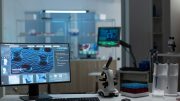Medical writing in pharma is ripe for disruption, across use cases linked to regulatory documentation and safety report summaries, and Generative AI (GenAI) promises exactly that. Yet, as drug companies have started to grow associated capabilities in house, they are realising that true efficiency gains will require more than just the relevant technology skillsets. Drawing on a relevant new survey of regulatory professionals’ priorities, Punya Abbhi, Chief Operating Officer and Co-Founder of Celegence, explores companies’ best bet in harnessing GenAI to solve their soaring medical writing burden.
Biopharma is an ideal target for Generative AI (GenAI)-based process transformation, with its highly regulated, templated repeat activities including medical writing in the context of license application; lifecycle maintenance; and ongoing post-market clinical and safety report generation. Even if GenAI-based applications could distil the right content to craft a first draft of these typically hefty documents (for attentive checking and amendment by skilled humans), that intervention alone would go a long way in alleviating the strain on overwrought regulatory professionals and adjacent teams.
Yet, even with the latest evolution of large language models (deep learning models trained on vast amounts of data), building a level of system ‘knowledge’ requires nuance and tailoring to be of trusted value. Even as AI models progress, they need to be guided in how to repurpose information and data correctly, with several examples of what ‘good’ looks like.
To yield tangible improvements to efficiency, AI skills need to be combined with life science industry fluency in specialist language and vocabularies, required templates and the nuanced demands of each market. That includes in-depth knowledge of what will be accepted by regulatory agencies and how that differs from region to region, and country to country; and a strong feel for specific medical writing best practices linked to each use case.
It takes vast reams of successful example content to fine-tune a GenAI model on what’s the best way to repurpose or analyse content, meanwhile – and the ideal output to aim for. For pharma companies to bring their own capabilities up to speed, and stay ahead, seems an impossible feat.
A pronounced capability gap
A survey conducted recently with the Regulatory Affairs Professionals Society (RAPS)[1] highlighted medical writing as a critical area requiring support, due to growing pressure on Regulatory professionals’ time. Over half (57 percent) of surveyed companies were planning to invest in technology to improve medical writing over the year ahead, almost on a par with eCTD v4.0 spending, the two categories dominating immediate Regulatory IT spending plans.
Clinical study protocol/report writing and drafting of regulatory documents were the primary medical writing needs identified by Regulatory professionals, requiring additional support. More than half of respondents in the 2024 study identified a need to harness AI in data extraction (56 percent) and information summarisation (53 percent), where just 9-10 percent are using AI for those purposes today – specifically within the context of medical writing. Twelve percent said they were actively in the process of incorporating AI into automated report generation from multiple sources, which is the ultimate opportunity on offer.
Despite these ambitions, more than half (53 percent) of survey respondents in pharma conceded that their organisations did not possess sufficient knowledge internally to implement AI technologies themselves.
Compliance expectations
Other potential barriers to AI uptake revolve around confidentiality and the scope for inadvertent breaches, linked in part to how the technology is ‘prompted’ to call up information. Because the technology is so complex below surface level, there are concerns that applying public cloud-based GenAI models could compromise internal data security.
All of these concerns are readily addressable in an appropriate ‘closed’ processing environment, which can be purposefully tailored to life sciences use cases. This ensures that all data interactions remain within a secure and controlled ‘space’, for data confidentiality and integrity purposes.
Other considerations include traceability and auditability: the ability to see where extracted data has come from or from which source content summarisation has been achieved (for instance, clear links in the final report to original documents). This is essential to build confidence and trust in solutions, so that they are seen to add significant value and save time; over-reliance on painstaking checks could undermine the return on investment.
Knowing that there are solutions that can be validated for priority pharma medical writing use cases will be an important facilitator for companies with a growing need for smarter support, as medical writing workloads continue to soar rather than diminish over time.
A wealth of potential benefits, including leaner & cleaner output
In looking for the value from an effective (and ideally fully-managed) GenAI medical writing automation capability, pharma companies need to look not just at the efficiency gains associated with smart data extraction, information summarisation, and narrative authoring – albeit that these are promising areas to start focusing on.
Further gains will come from improvements to consistency, and to leaner, tighter output once specified regulatory documents are being drafted according to training (from extensive exposure to approved documents) on what ‘good’ looks like.
Investing in R&D or partnership with external technology solution (and service) providers on a variety of use cases promises to make better use of scientific experts’ time, as use of their time shifts from initial drafting to the strategic thinking in collaboration with clinical development professionals. In a more strategic context, in early clinical evaluation, Gen-AI based tools could help summarise the vast wealth of existing information on the internet to hone the focus of planned research (such as alternative therapies) in order to avoid wasted time investment. AI-assisted search across multiple sources can also summarise headline findings, while also highlighting what emerges as the best path to follow.
An urgency to act on GenAI in medical writing
Although biopharma companies themselves may lack sufficient R&D resources internally to play around with possibilities, experimentation is a powerful way forward in determining where GenAI offers maximum value in transforming medical writing. The danger otherwise is of falling behind as innovators like Moderna (which already has more than 750 active use cases of AI to improve process efficiency[2]) continue to blaze a new trail.
It will be important, then, to find a way to at least co-design a pilot solution (for example with an appropriate technology or service partner), that can be tested with example documents – to determine how powerful and accurate the technology can be and how quickly it learns and adapts, to hone its output. By trying out the technology, companies will get more of a feel for what’s possible, and the scale of difference this could make to everyday Regulatory workflow.
About the author
Punya Abbhi is Chief Operating Officer & Co-Founder at Celegence. She was previously Life Sciences Consultant at Capgemini Consulting and before that spent time at Kates Kesler Organization Consulting and Gartner, and working for a specialist life sciences service provider. Punya holds an MBA from INSEAD and a BA in Politics, Philosophy, Economics (PPE) with a minor in Cognitive Science from the University of Pennsylvania.
References
[1] Pharmaceutical Industry Regulatory Readiness & Resources 2024 Survey Report, RAPS-Celegence – a survey of 139 pharma companies headquartered chiefly in the US, Europe or Asia-Pac regions
[2] https://investors.modernatx.com/news/news-details/2024/Moderna-and-OpenAI-Collaborate-To-Advance-mRNA-Medicine/default.aspx





